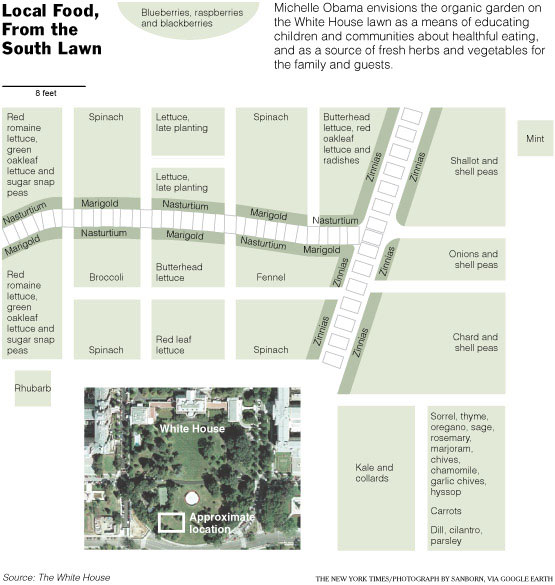Victory Gardens. If you read the news, it sounds like everyone is doing them. Michele Obama announced last week that part of the White House Lawn will be planted as an organic garden. This week, the beds were begun. First lady of California, Maria Shriver said this week that the California's Capitol Park will also have a organic vegetable garden this summer. Last fall, the lawns in front of San Francisco's city hall were planted as an organic garden called Victory Garden, 2008.
News reporters around the country scurry to add that everyday individuals, in response to our current economy, are planting Victory Gardens, too. Are you?
The term "Victory Garden" was started during World War II, when, as explained at Wessel's Living History Farm,
As part of the war effort, the government rationed foods like sugar, butter, milk, cheese, eggs, coffee, meat and canned goods. Labor and transportation shortages made it hard to harvest and move fruits and vegetables to market. So, the government turned to its citizens and encouraged them to plant "Victory Gardens." They wanted individuals to provide their own fruits and vegetables.Today's "victory gardens" have less to do patriotism and more to do with the current trends of DIY and the economic challenges facing many. Planting a garden speaks about:Nearly 20 million Americans answered the call. They planted gardens in backyards, empty lots and even city rooftops. Neighbors pooled their resources, planted different kinds of foods and formed cooperatives, all in the name of patriotism.
-reducing shipping to feet instead of miles.
-concerns for food safety as you know exactly what was used on or near your food.
-teaching the next generation how to eating healthier.
-reducing one's reliance on items provided only at the mega-supermarket.
The National Gardening Association in their new survey, The Impact of Home and Community Gardening in America, report that 7,000,000 more households plan to grow fruits, vegetables and herbs in 2009 over 2008. This is almost a 20% increase in home food production in just one year, and follows a the 10% increase in reported gardens for last year.

Getting back to the White House garden. Curious about what is being planted this year? This diagram provided by the White House and printed in the New York Times shows a variety of greens, peas, broccoli, carrots and herbs. There are several small beds of berries, a patch of rhubarb and some mint. An item that one
This move to get a White House garden was begun in 1992 by Alice Waters, perhaps the mother of all "eating local", and organized as the movement Eat The View.
Others adding to the idea:
Joe Lamp'l from ComPost Confidential is challenging himself to grow A $25 Victory Garden. As he will be using no supplies he's used/owned in the past (including his ready-to-spread compost), this is a huge challenge.
The Transition Culture decided to offer A friendly Permaculture Critique of the Obamas' Vegetable Garden. Among their suggestions: put the garden closer to the house and add more fruit.
The Dream Life's Lorilyn had a less-than-remarkable experience when starting a garden last year, and she wasn't sure about continuing the experiment. Then
I agree. With a week of sunny dry weather this past week, I began planting my own vegetable garden. However, since this has been a regular occurrence for over 25 years, I am loathe to take up the term "victory". What about you? Are you planning on starting your own victory garden this year?This week, when the fog rolled out and the spring like beauty began to roll in (our favorite tulip magnolia of the neighborhood is blooming) I started to see the dream come into focus
again. I began to consider cleaning up the beds, maybe even trying my hand at container potatoes. I still felt cautious, but all things seem so much more possible when winter retreats.
I also blog at: Weight for Deb and BlogHer on Wednesdays and Saturdays.





No comments:
Post a Comment